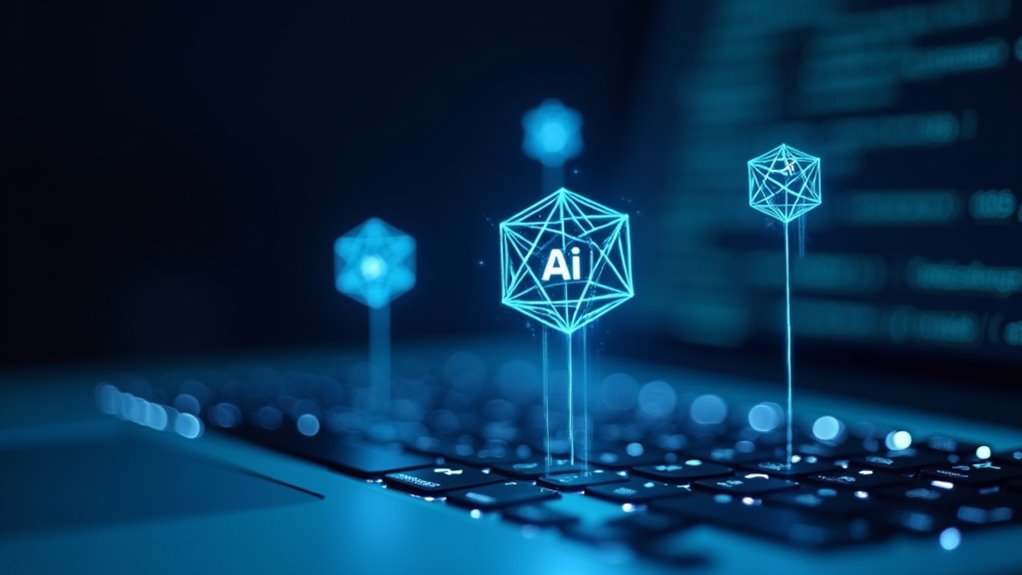While AI traces back to ancient myths of mechanical beings, modern AI officially began in 1956 at the Dartmouth Summer Research Project where John McCarthy coined the term “artificial intelligence.” Early innovations like the Logic Theorist and ELIZA showed promise, but funding cuts caused “AI winters” in the 1970s. Today’s AI revolution builds on decades of research despite these setbacks. The journey from philosophical concept to practical technology spans millennia, not merely decades.

When we talk about artificial intelligence, we’re actually discussing something much older than most people realize. The concept stretches back to ancient origins, with myths of artificial beings appearing in civilizations long before computers existed. Even Archytas created a mechanical pigeon around 400 BCE—yes, AI’s great-grandfather was fundamentally a robot bird. These ancient dreams of creating thinking machines laid important groundwork for what would come millennia later.
AI’s journey begins not with silicon, but with ancient dreams of mechanical beings that could think like us.
The early computing era of the 1940s marked the true birth of modern AI. Alan Turing, perhaps the field’s most important pioneer, developed the Bombe machine to crack Nazi codes during WWII. Think about that: AI’s practical applications began with saving the world from fascism. Not too shabby for a start!
These early computers were prohibitively expensive and couldn’t even store commands, but visionaries at Bletchley Park were already discussing intelligent machines by 1944.
The term “artificial intelligence” itself didn’t exist until John McCarthy coined it in 1955 for a workshop proposal. It became official in 1956 at the famous Dartmouth Summer Research Project. McCarthy and his colleagues envisioned machines that could use language, form abstractions, and solve problems just like humans do. Ambitious? Absolutely. But their optimism sparked a revolution.
Early AI systems followed quickly. The Logic Theorist mimicked human problem-solving in 1955, while Arthur Samuel’s 1952 checkers program learned to play better than its creator. ELIZA, developed in 1964, tricked many people into thinking they were chatting with a human therapist. This groundbreaking chatbot would later inspire the development of A.L.I.C.E chatbot in 1995, which featured enhanced natural language processing capabilities.
These innovations led to waves of excitement followed by “AI winters” when funding dried up due to unmet expectations. Professor Sir James Lighthill authored a critical report highlighting the gap between AI’s promises and actual achievements, which contributed significantly to reduced funding in the mid-1970s.
Today’s AI revolution builds on decades of quiet progress through these cycles of boom and bust. What began as ancient dreams of mechanical beings has evolved into systems that now beat world chess champions and power our daily digital lives. The field now focuses on developing human-centered design approaches that ensure AI technologies enhance rather than replace human capabilities.
Frequently Asked Questions
Who Were the Key Pioneers in Early AI Development?
Early AI was pioneered by several visionaries who saw machines’ potential. Alan Turing proposed the Turing Test in 1950, challenging computers to exhibit human-like intelligence.
John McCarthy (who coined “artificial intelligence”) and Marvin Minsky advanced theoretical frameworks, with Minsky developing Neural Networks concepts.
Herbert Simon and Allen Newell created practical AI programs like Logic Theorist. Together, these pioneers established AI’s foundation at the pivotal 1956 Dartmouth Conference, launching what would become a transformative field.
How Has AI Funding Evolved Over the Decades?
AI funding has transformed dramatically over decades.
Initially scarce in the 1960s with minimal government research grants, it crashed during the AI Winters when promises fell flat.
The 1980s brought renewed interest through Japanese and DARPA initiatives.
Today’s landscape? Venture capital flows like crazy—reaching $36 billion in 2020 before taking a nosedive in 2023.
Funding cycles mirror both technological breakthroughs and economic realities, shifting from theoretical pursuits to commercial applications that actually make money.
What Ethical Concerns Arose During Ai’s Historical Development?
Ethical implications of AI have evolved dramatically over time. Early debates centered on Asimov’s Three Laws, focusing on safety and human protection.
As AI advanced, historical debates shifted to more complex concerns: biased data perpetuating social injustices, lack of transparency in decision-making processes, and questions of moral responsibility. Who’s to blame when AI makes mistakes?
Later concerns expanded to privacy violations, social manipulation, and autonomous weapons. These ethical challenges continue to shape AI development today, demanding new frameworks and global cooperation.
How Did AI Capabilities Change Before Deep Learning?
Before deep learning stole the spotlight, AI relied heavily on rule-based systems and symbolic reasoning – basically telling computers exactly what to do in specific situations.
No fancy neural networks here! Early AI couldn’t learn on its own but followed explicit instructions programmed by humans.
Systems excelled at narrow tasks like playing chess or diagnosing diseases when given clear rules, but they struggled with ambiguity.
These rigid frameworks laid essential groundwork for today’s more flexible learning approaches.
What Caused the Major AI Winters Historically?
AI winters resulted from a perfect storm of disappointment and reality checks.
The first winter (1974-1980) came after the Lighthill Report criticized AI’s progress, triggering widespread funding cuts when promised breakthroughs failed to materialize.
The second winter (1987-1993) followed when expensive expert systems crashed and burned in business settings.
Both periods exposed harsh AI limitations – the technology simply couldn’t deliver what researchers had boldly promised.
Lesson learned? Don’t overhype what you can’t deliver.









